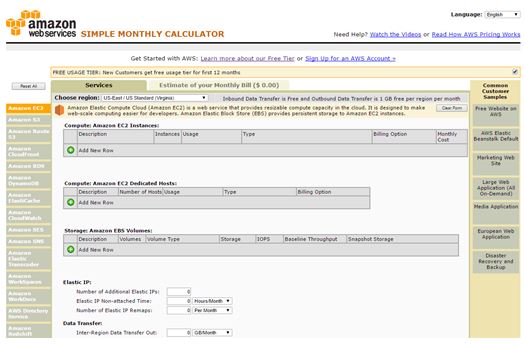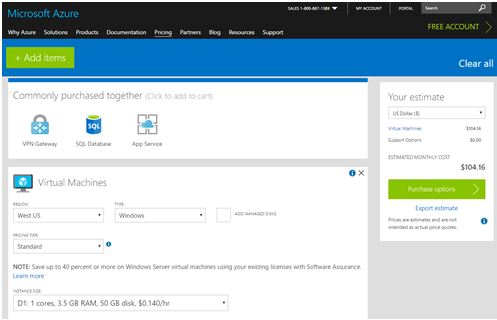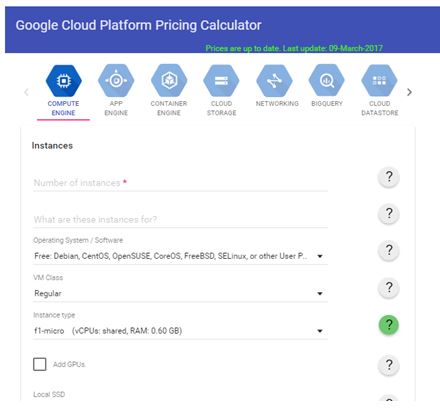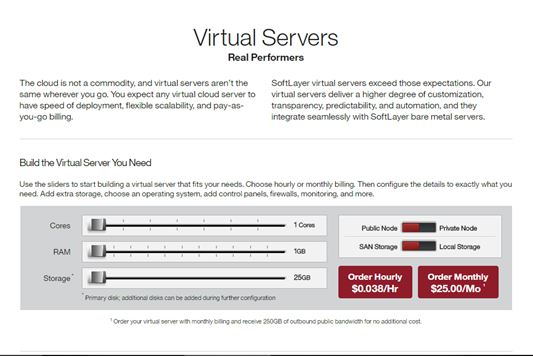Cloud cost calculators play a key role in cloud planning and ongoing management. Cloud computing vendors often tout their low prices as one of the big reasons to use their services. And in the RightScale 2017 State of the Cloud Report 35 percent of respondents reported cost savings from their cloud computing efforts. But while the cloud can save you money, figuring out how much you might be able to save is incredibly complicated.
And that, in a nutshell, is why your business needs a cloud cost calculator: monitoring changing costs is critical.
Cloud Storage and Backup Benefits
Protecting your company’s data is critical. Cloud storage with automated backup is scalable, flexible and provides peace of mind. Cobalt Iron’s enterprise-grade backup and recovery solution is known for its hands-free automation and reliability, at a lower cost. Cloud backup that just works.
SCHEDULE FREE CONSULT/DEMO
Infrastructure as a service (IaaS) and platform as a service (PaaS) prices vary based on a wide range of factors, and different vendors offer different types of services and different discount levels. And just when you think you have it all figured out, the vendors will drop their prices, and you’ll have to run all your calculations again. It’s helpful to have a cost calculator that helps you track these cloud price changes.
The good news is that all of the major cloud computing vendors offer cloud cost calculators. Most adjust their pricing several times a year in order to keep in step with their competitors – the cloud vendors have been engaged in a so-called “race to the bottom,” pricewise. And they will change their cost calculators accordingly.
Clearly, most organizations need a specific number – or a close range – of how much their cloud services will cost before they sign up with a vendor. Generating an accurate estimate of cloud costs requires not only a cost calculator, but a good bit of time to weigh your internal variables, and probably some dialogue with your cloud provider. Bottom line: figure your cloud expense ahead of time – and keep your eye on costs as you go. If you’re ready to compare cloud types and vendors, see our comprehensive guide to cloud computing.
Contents:
Financial Benefits of Cloud Computing
Fully understanding cloud cost calculation requires understanding the financial benefits of the cloud model. People who are new to the cloud often wonder how cloud computing saves organizations money. After all, a large enterprise is presumably going to need the same number of servers whether they are located in its own data center or an external cloud provider. How then does cloud computing result in cost savings? Experts point to several financial benefits of the public cloud:
- Economies of Scale: The data centers run by the world’s largest public cloud vendors are enormous. The sheer size and scale of these operations allows the vendors to obtain discounts on hardware and to implement measures that make their operations and maintenance very efficient. As a result, it simply costs less for cloud computing providers to run their data centers than it costs individual enterprises to operate smaller data centers.
- Eliminating Overprovisioning: Most organizations have periods of time when they are running more workloads than at other times. For example, an organization’s accounting systems may get a workout at the end of the month, and their ecommerce systems may experience a sudden surge around the holidays. As a result, they must invest in extra storage and computing infrastructure to accommodate these periods of high demand. But in the cloud, organizations are paying only for what they are using at a given time, eliminating the upfront expenses associated with overprovisioning.
- Converting CapEx to OpEx: With cloud computing, enterprises eliminate most of their upfront costs and instead pay subscription fees, usually on a monthly basis. Converting these capital expenses to operating expenses can increase cash flow and decrease a company’s tax bill — both of which are good for the bottom line.
- Reducing Related Costs: When a company uses a public cloud, it eliminates or reduces the real estate and utility costs associated with an in-house data center. In addition, it will not need IT people to deploy and operate infrastructure, which can reduce labor costs or free up staff for other, more lucrative projects.
- Automatic Upgrades: When they are buying hardware for their own data centers, organizations generally cannot afford to upgrade their infrastructure more often than every three years or so. But when they use a cloud computing service, organizations can access the most up-to-date hardware if they choose, and software is updated automatically as well. That can result in faster performance, which can help employees get their work done more quickly.
- Higher Productivity: Relying on cloud services means that staff can access their data and application at any time and from any location. That can result in productivity increases for their employers.
- Improved Availability: In general, cloud computing services experience less downtime than in-house data centers, which can lead to even greater productivity improvements.
How Cloud Computing Costs Are Calculated
Given the potential financial benefits of cloud computing, many organizations are eager to figure out exactly how much money the cloud model could save them. And many IT departments need to put together a business case for cloud computing before they can get cloud projects approved.
However, calculating cloud costs is notoriously difficult because so many different factors can influence the final price. Below is a quick overview of the major factors that play a role in cloud compute or storage pricing. You’ll need similar types of information to estimate costs for other types of cloud services.
Services: The first thing you’ll need to know is which particular cloud services you want to use. Each vendor has a slightly different lineup of services available, so you’ll need to do some research if you want to compare prices. In addition, don’t forget to add in any related services you’ll need; for example, if you are using Amazon Elastic Cloud Compute (EC2), consider whether you will also need load balancing services, which will affect the final price.
Instances: An “instance” is the cloud computing terminology for what type of server you will need. The leading vendors all offer a wide selection of different levels, based on the number of CPU cores you need, memory, attached storage, I/O requirements and whether you need any GPUs. The instances you select will play a very big role in your final costs, so you want to be sure that you pick the size that will give you the performance you desire without paying for more than you need.
Geographic region: Prices sometimes vary depending on which of the vendor’s cloud data centers you choose to use. In general, you will get the best performance and lowest latency when you choose the region closest to your physical location. However, some organizations may need to pick a particular region for some workloads because of compliance requirements, and in some cases organizations may choose a data center outside of their region to meet their disaster recovery or business continuity requirements.
Operating System: Figuring out the OS licensing fees can be one of the trickier aspects of estimating cloud costs. The vendors will allow you to provision Windows or Linux servers with the licensing fees included, but it might be more cost effective to transfer your existing license agreement to the cloud.
Free tier: All of the leading public cloud vendors offer free tiers for their services, but the details of the programs vary widely. You’ll need to check with the provider to see if you qualify for free services and how long you can use the them.
Support: What level of support will you need for the workloads you will be running in the cloud? Obviously, business-critical production workloads will require faster support response times than dev or test environments. Many of the vendors offer different levels of support depending on your needs, and those levels affect cloud costs.
Utilization: Some cloud computing workloads may run almost constantly, while others will run for only a few hours each month. Because cloud costs depend on the amount of time that you use the service, your utilization rate will affect your monthly bill significantly.
Discounts: As if all of that wasn’t complicated enough, the major cloud vendors offer a variety of different discount programs. You may be able to reduce your costs by obtaining volume discounts, paying for some or all of your usage upfront, by allowing the vendor to “pre-empt” workloads that don’t need to run immediately or by participating in other programs.
Cloud Storage Costs
For cloud storage, some of the pricing factors, such as the geographic region are the same as for compute costs. However, others are quite a bit different. You’ll need to know the amount of storage you’ll need (the size of your data in GB or TB), the level of redundancy you’ll need, and how frequently you’ll need to access or perform transactions on your stored data. You may also encounter fees related to data transfer, and the price may be different depending on whether you need block, file or object storage. Some vendors will also allow you to specify whether your data will be stored on disk or SSDs.
Cloud Cost Calculators
In most cases, the easiest way to make sense of all those factors that influence cloud costs is to use the vendor’s cost calculators. Be warned, however, that the best these tools can do is offer a rough estimate of costs; your actual bill may vary significantly.
AWS offers a Simple Monthly Calculator that makes it possible to estimate the costs for its most popular cloud computing services. It also includes some helpful sample data that illustrates the factors you’ll need to consider when running a website on AWS or using Amazon’s cloud for backup and disaster recovery. AWS also has a Total Cost of Ownership (TCO) Calculator designed to show how much you could save by using AWS instead of your own data center. However, because every organization is going to have very different costs, the TCO calculator may or may not be very accurate for your particular situation.

Microsoft’s Azure pricing calculator has one of the most attractive and intuitive interfaces of any of the cloud cost estimation tools. It suggests services that are often purchased together and keeps a running total of Azure charges in the box on the right side of the screen. Like many of the other services, it also has a TCO calculator, and its TCO tool is somewhat more useful than some of the others because it allows users to adjust assumptions about electricity costs, labor costs, software costs, etc.

Google Cloud Platform has a Pricing Calculator with a fairly user-friendly interface. It also has a TCO calculator that compares Google prices with AWS’s prices.

IBM offers a very basic pricing calculator for its Bluemix PaaS. To get information about discounts, you have to contact the company directly. Its SoftLayer IaaS promises “cloud without the cloudy pricing,” and its virtual server cost calculator has a unique slider interface that makes its cost calculator easy to use.

Other websites with cloud cost calculators include the following:
In addition, vendors like Cloudability, Cloud Cruiser, CloudCheckr, Cloudyn, CloudAware and others offer paid services for estimating, managing and optimization cloud costs.
SEE ALL
CLOUD ARTICLES











